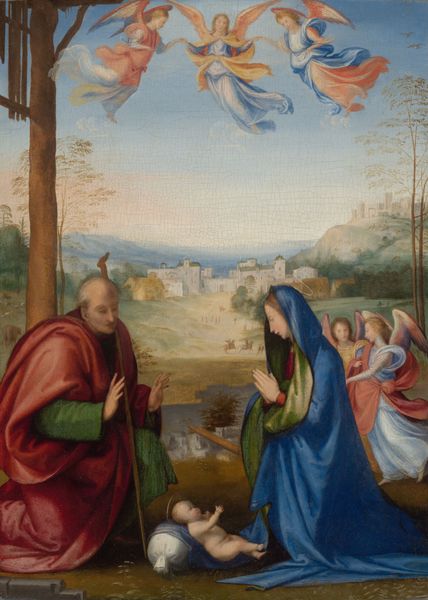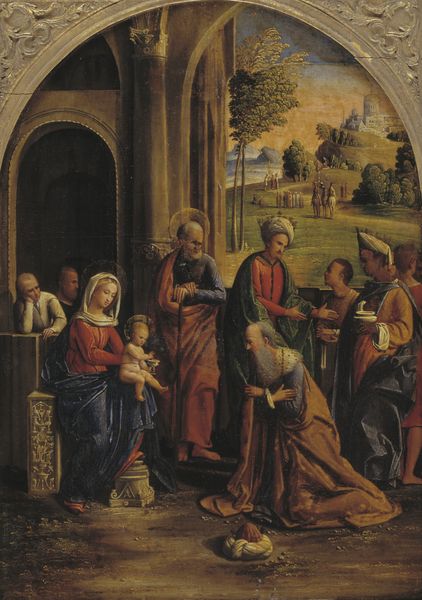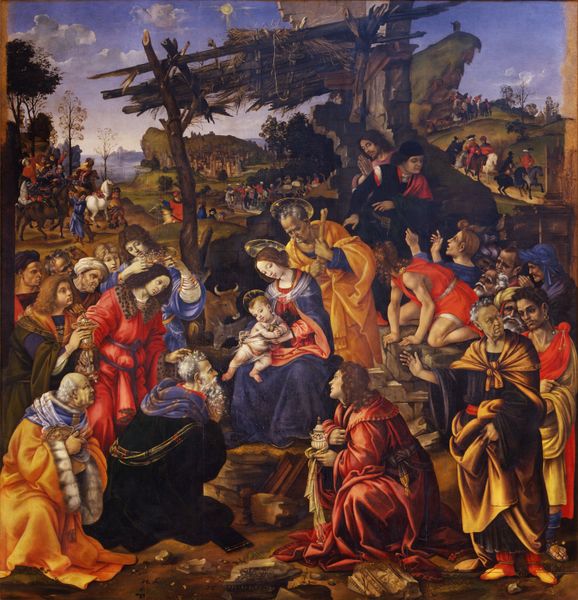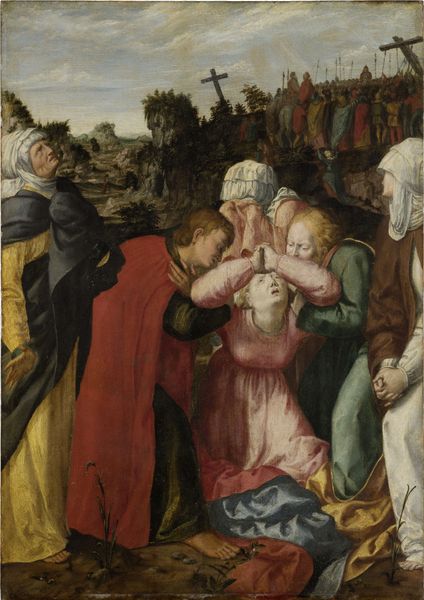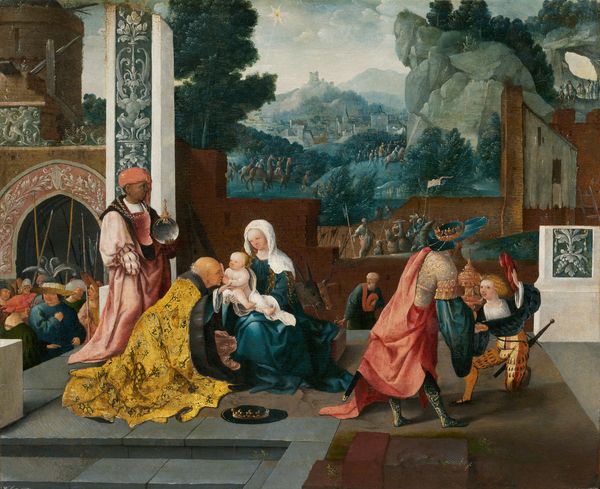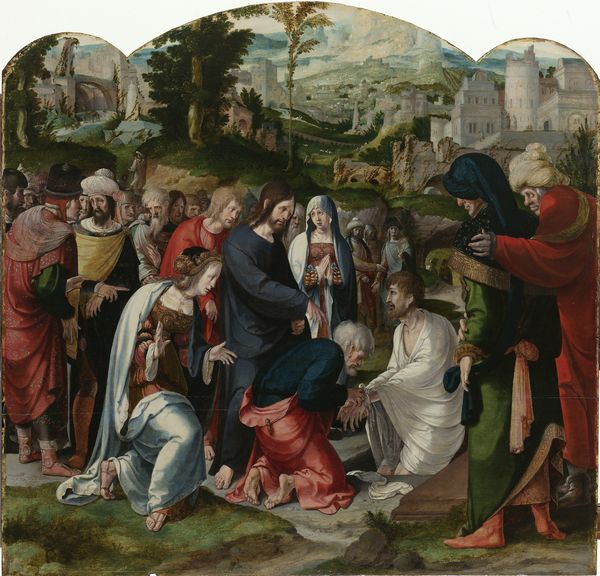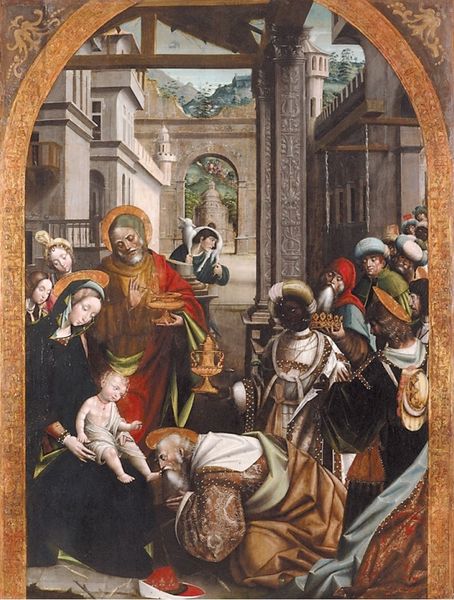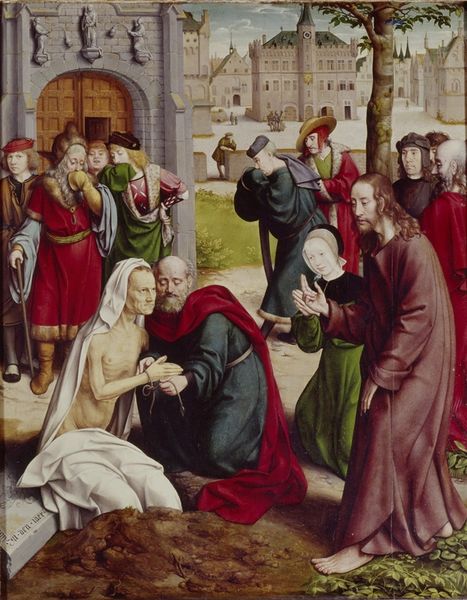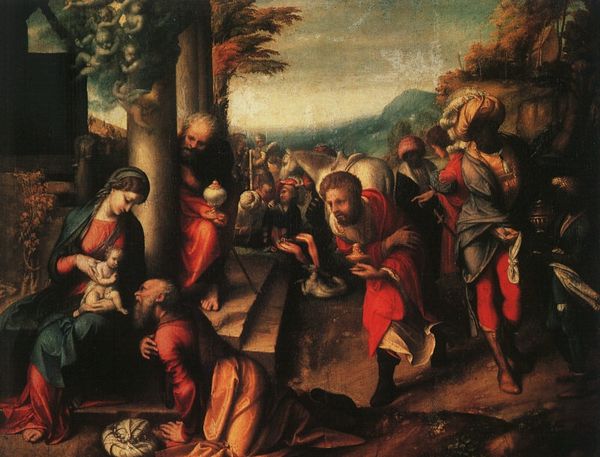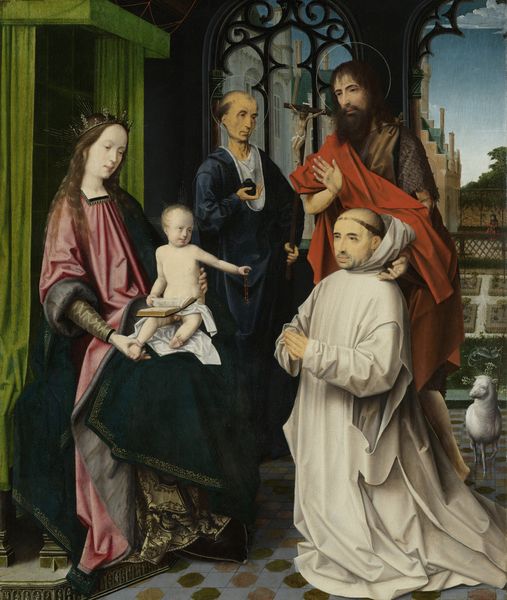
painting, oil-paint
#
portrait
#
painting
#
oil-paint
#
landscape
#
figuration
#
oil painting
#
jesus-christ
#
christianity
#
history-painting
#
northern-renaissance
#
virgin-mary
#
christ
Dimensions: 141 x 111 cm
Copyright: Public domain
Editor: This is Albrecht Altdorfer's "Christ Taking Leave of His Mother," painted around 1520. The first thing that strikes me is the raw emotion in Mary’s face, almost collapsing under the weight of Christ’s departure. What stands out to you when you look at this piece? Curator: I’m immediately drawn to the construction of gender roles within this historical moment. Look at Mary's passive, grief-stricken state versus Christ's active departure. How does this perpetuate patriarchal narratives, positioning women as emotionally vulnerable and men as agents of action? What is the intersection of divinity, gender and power at play here? Editor: I hadn't thought about it that way. I was mostly focused on the composition itself and the dramatic expressions. It makes me wonder if Altdorfer intended that reading? Curator: Intention is only a fraction of it, isn't it? His society certainly had established expectations for men and women, visible here. But the very act of representing this departure – making the private, maternal grief public – could also be read as a subversive act, pushing the boundaries of acceptable representations of the divine family and asking viewers to engage empathetically with the pain inherent in the patriarchy's designs. Editor: So, you’re saying even within seemingly traditional depictions, we can find elements of resistance? Curator: Precisely. Art isn't created in a vacuum. Examining its social and historical context opens up dialogues about power, identity, and even the potential for subversion. How else could we approach this separation and sacrifice beyond a religious view? Editor: I guess by seeing it through Mary’s perspective as resistance but also acceptance of faith. Curator: Exactly. Thinking intersectionally like this is really crucial in art history. Editor: That makes me see this piece in a completely different light. Thanks!
Comments
No comments
Be the first to comment and join the conversation on the ultimate creative platform.
